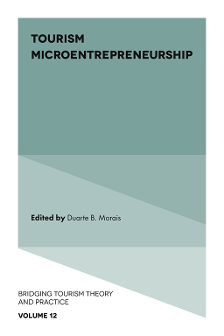
Index
ISBN: 978-1-83867-464-9, eISBN: 978-1-83867-463-2
ISSN: 2042-1443
Publication date: 27 September 2021
Citation
(2021), "Index", Morais, D.B. (Ed.) Tourism Microentrepreneurship (Bridging Tourism Theory and Practice, Vol. 12), Emerald Publishing Limited, Leeds, pp. 225-232. https://doi.org/10.1108/S2042-144320210000012019
Publisher
:Emerald Publishing Limited
Copyright © 2021 by Emerald Publishing Limited
INDEX
- Prelims
- Introduction: Hence Tourism Microentrepreneurship
- Part I Understanding Tourism Microentrepreneurs
- Opportunities and Challenges at the Margins of Seaborne Tourism
- Microentrepreneurial Motivations and Perceived Benefits in Laos
- Tourism Microentrepreneurship in Family Farms
- Gender and Benefit-Sharing in Indigenous Tourism Microentrepreneurship
- Part II Microentrepreneurial Knowledge
- Local Knowledge in Tourism Microentrepreneurship
- Creative Tourism Microentrepreneurs in Portugal
- ICT Innovation Diffusion by Tourism Microentrepreneurs
- Reactions to the Sharing Economy by Tourism Stakeholders
- Part III Integrated Destination Stewardship
- Place-based Rural Tourism Microentrepreneurship in Vojvodina
- Cultural Representation by Local Food Microenterprises
- A Destination's Embrace of Tourism Microentrepreneurship
- Conceptualizing Permatourism
- Conclusion: Principled Engagement with Tourism Microentrepreneurs
- Bibliography
- Index